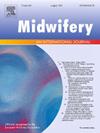探索在妊娠早期使用心脏代谢风险(妊娠期糖尿病和妊娠高血压疾病)的风险预测工具的可接受性:一项定性研究
IF 2.6
3区 医学
Q1 NURSING
引用次数: 0
摘要
问题/背景:在妊娠早期使用风险预测工具为妇女提供个性化心脏代谢风险信息的可接受性尚不清楚。目的:探讨妇女和医疗保健专业人员在妊娠早期使用一种用于心脏代谢风险(妊娠期糖尿病和/或妊娠期高血压疾病)的预后、综合风险预测工具的可接受性。方法:采用半结构化访谈方法,探讨心脏代谢风险预测工具的可接受性、风险沟通的偏好以及在产前保健中实施的考虑因素。可接受性的理论框架告知面试问题。对转录本进行主题分析。结果:参与调查的妇女≤24周(n = 13)和卫生保健专业人员(n = 8),包括助产士(n = 2)、全科医生(n = 2)、产科医生(n = 2)、内分泌科医生(n = 1)和心脏病科医生(n = 1)。与会者指出,只有在能够采取预防措施以减轻风险时,才适合提供个性化的风险信息。区分每种情况的风险(单一风险输出)往往比组合风险输出更可取,从而实现有针对性的监测和管理。建议确定母亲/婴儿的病情和风险,直观地描绘个性化风险评分,并提供清晰的以患者为中心的临床管理计划。建议改变支持性临床政策、工作人员参与/培训以及将其纳入电子健康记录,以促进纳入常规产前保健。结论:妇女和卫生保健专业人员建议,当有预防性干预措施可降低风险时,早期妊娠心脏代谢风险预测工具可能是可接受的。带有以患者为中心的综合教育材料的风险预测工具可促进及时获得和参与预防性干预措施,以优化妇女当前和未来的健康。本文章由计算机程序翻译,如有差异,请以英文原文为准。
Exploring the acceptability of a risk prediction tool for cardiometabolic risk (gestational diabetes and hypertensive disorders of pregnancy) for use in early pregnancy: A qualitative study
Problem/ Background
The acceptability of providing women with personalised cardiometabolic risk information using risk prediction tools early in pregnancy is not well understood.
Aim
To explore women's and healthcare professionals’ perspectives of the acceptability of a prognostic, composite risk prediction tool for cardiometabolic risk (gestational diabetes and/or hypertensive disorders of pregnancy) for use in early pregnancy.
Methods
Semi-structured interviews were conducted to explore the acceptability of cardiometabolic risk prediction tools, preferences for risk communication and considerations for implementation into antenatal care. The Theoretical Framework of Acceptability informed interview questions. Transcripts were thematically analysed.
Findings
Women ≤24 weeks’ gestation (n = 13) and healthcare professionals (n = 8), including midwives (n = 2), general practitioners (n = 2), obstetricians (n = 2), an endocrinologist (n = 1) and cardiologist (n = 1) participated. Participants indicated that providing personalised risk information is only appropriate when preventative measures can be initiated to mitigate risks. Differentiating the risk for each condition (single risk outputs) was often preferred to composite risk outputs to enable targeted monitoring and management. Defining conditions and risks to mother/baby, visually depicting personalised risk scores, and providing clear, patient-centred clinical management plans were recommended. Supportive clinical policy changes, staff engagement/training, and integration into electronic health records were suggested to facilitate uptake into routine antenatal care.
Conclusion
Women and healthcare professionals suggested that early pregnancy cardiometabolic risk prediction tools may be acceptable when preventative interventions are available to reduce risks. Risk prediction tools with integrated patient-centred education materials may promote timely access and engagement with preventative interventions to optimise women's current and future health.
求助全文
通过发布文献求助,成功后即可免费获取论文全文。
去求助
来源期刊

Midwifery
医学-护理
CiteScore
4.50
自引率
7.40%
发文量
221
审稿时长
13.4 weeks
期刊介绍:
Midwifery publishes the latest peer reviewed international research to inform the safety, quality, outcomes and experiences of pregnancy, birth and maternity care for childbearing women, their babies and families. The journal’s publications support midwives and maternity care providers to explore and develop their knowledge, skills and attitudes informed by best available evidence.
Midwifery provides an international, interdisciplinary forum for the publication, dissemination and discussion of advances in evidence, controversies and current research, and promotes continuing education through publication of systematic and other scholarly reviews and updates. Midwifery articles cover the cultural, clinical, psycho-social, sociological, epidemiological, education, managerial, workforce, organizational and technological areas of practice in preconception, maternal and infant care.
The journal welcomes the highest quality scholarly research that employs rigorous methodology. Midwifery is a leading international journal in midwifery and maternal health with a current impact factor of 1.861 (© Thomson Reuters Journal Citation Reports 2016) and employs a double-blind peer review process.
 求助内容:
求助内容: 应助结果提醒方式:
应助结果提醒方式:


